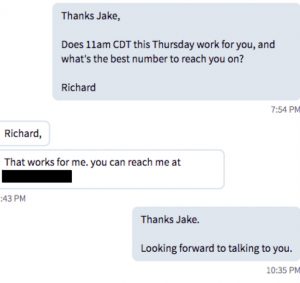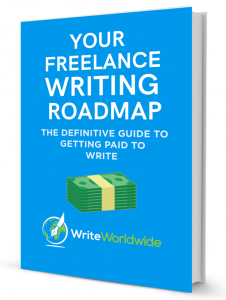Whilst there’s a wealth of information available online to help beginner freelance writers kickstart their freelance writing careers, the amount can prove overwhelming.
To address this problem I’ve curated a list of 8 actionable posts that will help beginner freelance writers, like yourself. The featured posts are handpicked to help you make progress now.
For ease of navigation I’ve broken the article into 4 categories:
- Your writer’s website that establishes you as a professional and allows you to showcase your skills.
- Social proof that helps you command higher rates.
- Landing high-paying clients through strategies like cold-pitching
- Marketing your business as a freelance writer. If you want to become a successful freelance writer you need to think like a business owner, and market yourself like a pro.
If you’re starting your freelance writing journey, work through the article in order. If you’re a little further on in your writing career, simply scroll down to the relevant category.
Enough talking. Here they are.
Your Writer’s Website
This post from Mridu Khullar Relph of The International Freelancer, gives a great overview of how to set up your writer’s site. Mridu recommends the WordPress platform. It’s the industry standard, so go with it. Also, many clients will use it, so it helps to be familiar with it.
Mridu’s shows how easy it is to create a website. The post is split into 3 sections:
- Register a domain and buy hosting
- Design the website
- Enter in your content
It’s a useful primer on the basics of creating a website.
Besides creating your site, you also want a killer design, right? Why not try the Divi WordPress Theme? Jorden Roper of Writer’s Revolt walks you through the popular Divi Website Builder.
Divi is an intuitive drag-and-drop web builder that makes creating a professional website a breeze. We may be a little biased here as we use Divi for WriteWorlwide, but hey, it works like a charm. You don’t need any coding knowledge and won’t have to fork out money for a designer.
Social Proof
Social proof is important when it comes to positioning yourself as a freelance writer. As a beginner writer, it’s even more crucial. In this post, Bamidele Onibalusi of Writer’s in Charge delves into the psychology of social proof and provides 5 proven strategies to rapidly build it yourself.
Freelancer FAQs provides a great companion piece to Bamidele’s post with further strategies to build social proof, like with testimonials and guest blogging.
Landing Your First Clients
This challenge helped the co-founders of WriteWorldwide kickstart their freelance writing careers. If you think we’ve been at this for a long time, you’d be wrong. Very, very wrong! Nick only jumped into the world of freelance writing in July 2016.
Bamidele’s post provides links to further posts that will help you go from beginner to pro, fast. This mammoth resource covers everything from setting up your writer’s site to landing high-paying clients through cold pitching. It’s a golden gem. What’s more, it’s free.
Okay, perhaps I’m a little biased here as I wrote this post. But based on the engagement in the comments section (there’s too many to list), it was a hit.
It provides a condensed version of the Earn Your First $1000 Challenge, together with some clever tactics like using Fiverr to build up your prospect list.
Marketing Your Writing Business
Elna Cain is an established freelance writer and the owner of Freelancer FAQs. She shares 10 clever ways to market your freelance writing business, from using your email signature and starting a blog to housing your portfolio in different places like Pinterest and Contently.
Linkedin is fast becoming (if it isn’t already) a goldmine for landing freelance writing clients. In fact, it has several advantages over cold-pitching. Here are a few (among many others):
- You’re able to post updates to engage your audience and build authority.
- By using “people search” you can easily identify and connect with prospects, eliminating the need for a list.
- Join groups to connect with writers and editors to gain exposure.
In the post, I explore how to use Linkedin to land clients based on my own success with the platform. I use it to setup 3 calls with clients a week right now. I could do more, but I’m balancing a full-time job. Here’s a typical Linkedin exchange with a client:

Over to You
Whilst we can provide you with actionable posts to help you move from beginner to pro, what you do with them is up to you. What’s your next move?




Greetings! Very useful advice in this particular article! It is the little changes which will make the most significant changes. Many thanks for sharing!
You’re very welcome Rupert.
Glad you found it helpful.